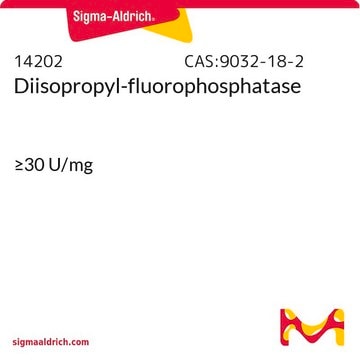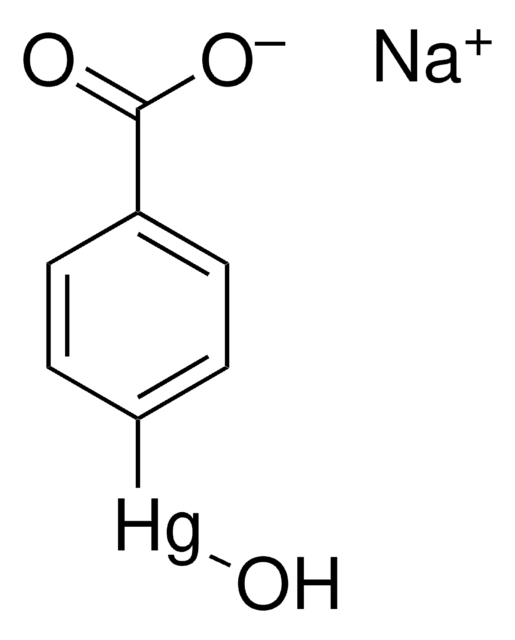38399
Diisopropylfluorophosphate
≥97.0% (GC)
Sinónimos:
DFP, DIFP, Diisopropyl phosphorofluoridate, Phosphoric acid diisopropyl ester fluoride
About This Item
Productos recomendados
presión de vapor
0.58 mmHg ( 20 °C)
Ensayo
≥97.0% (GC)
índice de refracción
n20/D 1.385 (lit.)
bp
62 °C/9 mmHg (lit.)
mp
−82 °C (lit.)
densidad
1.06 g/mL at 25 °C (lit.)
temp. de almacenamiento
2-8°C
cadena SMILES
CC(C)OP(F)(=O)OC(C)C
InChI
1S/C6H14FO3P/c1-5(2)9-11(7,8)10-6(3)4/h5-6H,1-4H3
Clave InChI
MUCZHBLJLSDCSD-UHFFFAOYSA-N
Información sobre el gen
human ... ACHE(43) , PTGS1(5742) , PTGS2(5743)
¿Está buscando productos similares? Visita Guía de comparación de productos
Acciones bioquímicas o fisiológicas
Nota de análisis
Otras notas
sustituido por
Palabra de señalización
Danger
Frases de peligro
Consejos de prudencia
Clasificaciones de peligro
Acute Tox. 1 Oral - Acute Tox. 2 Dermal - Acute Tox. 2 Inhalation
Código de clase de almacenamiento
6.1A - Combustible acute toxic Cat. 1 and 2 / very toxic hazardous materials
Clase de riesgo para el agua (WGK)
WGK 3
Punto de inflamabilidad (°F)
Not applicable
Punto de inflamabilidad (°C)
Not applicable
Equipo de protección personal
Eyeshields, Faceshields, Gloves, type ABEK (EN14387) respirator filter
Elija entre una de las versiones más recientes:
Certificados de análisis (COA)
It looks like we've run into a problem, but you can still download Certificates of Analysis from our Documentos section.
Si necesita más asistencia, póngase en contacto con Atención al cliente
¿Ya tiene este producto?
Encuentre la documentación para los productos que ha comprado recientemente en la Biblioteca de documentos.
Nuestro equipo de científicos tiene experiencia en todas las áreas de investigación: Ciencias de la vida, Ciencia de los materiales, Síntesis química, Cromatografía, Analítica y muchas otras.
Póngase en contacto con el Servicio técnico









